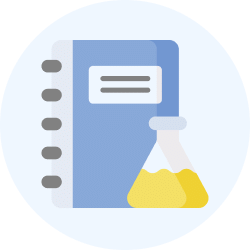Physical and Chemical Changes Class 7 Worksheet Science Chapter 5
Q.1. True/False
(i) Formation of manure from leaves is a physical change.
(ii) Iron pipes coated with zinc do not get rusted easily.
(iii) Iron and rust are the same substances.
(iv) The chemical name of baking soda is Sodium hydrogen carbonate.
(v) Changes in which new substances are formed are called chemical changes.
Q.2. Fill in the blanks.
(i) Cutting a log of wood into pieces is a ____ change.
(ii) Condensation is a ____ change.
(iii) When carbon dioxide is passed through lime water, it turns milky due to the formation of ____.
(iv) Two methods by which rusting of iron can be prevented are ____ and ____.
(v) Changes in which only ____ properties of a substance change are called physical changes.
(vi) A medicine is the end product of a chain of ____.
Q.3. What is added to steel to make it stainless?
Q.4. Stainless steel is made by mixing iron with carbon and metals like chromium, nickel and manganese.
Q.5. What happens when magnesium oxide is dissolved in water?
Q.6. What happens when magnesium ribbon is burnt in air?
Q.7. What happens when an iron nail is dipped in copper sulphate solution?
Q.8. What type of change is formation of manure?
Q.9. What do you understand by chemical change?
Q.10. What is galvanisation?
Q.11. Why formation of manure from leaves is a chemical change?
Q.12. Why a slice of an apple acquires a brown colour if it is not consumed immediately?
Q.13. Why tearing of paper into pieces is a physical change?
Q.14. Why is spoiling of food a chemical change?
Q.15. Ozone acts as a natural shield against ultraviolet radiation. Explain?
Q.16. What is rusting?
Q.17. Explain why burning of wood and cutting it into small pieces are considered as two different types of changes.
Q.18. What is crystallisation?
Q.19. Why does rusting takes place faster during rainy season?
Q.20. What is a physical change?
You can find Worksheets Solutions here: Worksheet Solutions: Physical and Chemical Changes
|
112 videos|286 docs|28 tests
|
FAQs on Physical and Chemical Changes Class 7 Worksheet Science Chapter 5
| 1. What is a physical change? |  |
| 2. What is a chemical change? |  |
| 3. What are the differences between physical and chemical changes? |  |
| 4. Can a physical change lead to a chemical change? |  |
| 5. How can you determine if a change is physical or chemical? |  |

















